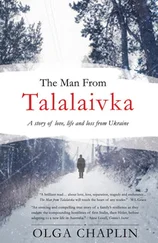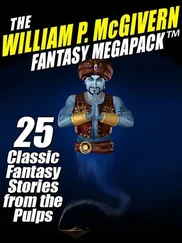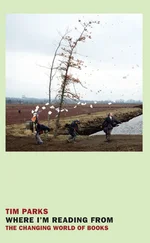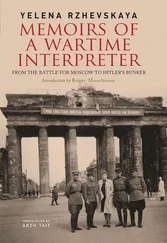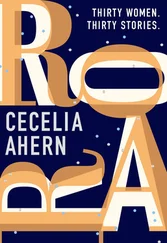Today, what you think of this past, how you relate to it, determines what you think about the future of Ukraine. And what you think of the past is quite likely to be bound up with the history of your own family and where you live. This is true for the Donbass, a mining region, just as it is for anywhere else. People came from all over the Soviet Union to work and settle in this flat land pockmarked by pyramids and hills of slag and scruffy little mining and industrial towns. Donetsk was a working-class mining town. For many of its inhabitants then, Ukraine, which had been part of imperial Russia, was not a land where they had roots. With the demise of the Soviet Union it was harder for many of these people, almost all of whom spoke Russian as their first language, to identify with or to love Ukraine as their own country. It was just where they ended up when Soviet republics’ borders became international frontiers.
When I left the regional administration building I got a taxi and asked the driver if he would like Donetsk to remain in Ukraine or become part of Russia as Crimea had done. He said: “I don’t care. I just want to get paid.”
In post-Soviet Ukraine, working-class professions were not valued as they had been, at least nominally, before. All Ukraine (and Russia) fell to predators and sharp operators who knew how to make money, to steal and to get rich. But, while many in the east remained wedded to their Soviet heritage and hence its interpretation of history, the west of Ukraine did not. And the twain have not met. History did not start the war. It is just that history has been used to shape the present by politicians.
3.
“Our history is different!”
Every time there has been an election you can see the regional divides on maps, with the east and south voting heavily for more pro-Russian parties and the west and center for more pro-European ones. If you drew a map of memorials you would find something similar. In much of the west and center of Ukraine, though by no means everywhere, statues of Lenin, especially prominent ones, have gone. During the Maidan revolution, and even afterward, many remaining ones were toppled because they were regarded not merely as memorials to the man and to communism, but as symbols held dear by those who see Russia as their lodestar and not just the past but the country’s future too. In the west, and in particular in Galicia—the largest former Austro-Hungarian part of Ukraine, annexed by the USSR in 1939 and retaken again in 1944—Soviet memorials decay while more and more are built to honor the Ukrainian Insurgent Army, the UPA, of Stepan Bandera. Travel in the Carpathian region though, which was the tip of Czechoslovakia until amputated in 1939, and they vanish, because, as Vasyl Khoma, who runs a hotel in Rakhiv on the Romanian border and who had been its deputy mayor, told me sternly, “Our history is different!”
And so it is—sometimes even happily so. In this part of the country one of the most popular attractions and tourist draws is at the nearby village of Dilove. If someone had invented its story, few would have believed it. It is a monument erected in 1887 by the Austro-Hungarian Military Geographical Institute, which the locals claim marks their discovery of the center of Europe. They believe this thanks to an incorrect Soviet-era translation of the original Latin inscription that in fact makes no such claim. But at least the site, which attracts visitors on the basis of actually being the center of Europe and gives work to people in the café and those selling souvenirs and trinkets, is perhaps the most harmless of misconceptions commemorated in stone in Ukraine.
Far away, in Ukraine’s east, tourists once came to the monument of Savur-Mogila, an hour and a half’s drive from Donetsk. This was also the site of an annual pilgrimage to commemorate the crucial battle fought here in 1943 in which thousands of Red Army soldiers died. Now the ruins of this vast Soviet memorial are a tragic sight. The place was fought over then because it was virtually the only hill in otherwise flat eastern Ukraine. In 2014 it was even more important than before. Now it is ten kilometers, as the crow flies, from the Russian border, so whoever controls the hill controls the corridor to the border and the road along it.
At the bottom of a ceremonial-style walkway and steps to the top are Second World War tanks, artillery pieces and trucks. Now in the hands of DNR forces, one of the tanks has “To Kiev” painted on it. Among the surrounding burned pines are the remains of a destroyed Ukrainian armored vehicle. On either side of the walkway are the heavily shrapnel-pockmarked giant steel sculptured heads of tank drivers, soldiers and classic Soviet tableaux of fighting men. Before this war the main part of the monument was a huge 36-meter-high obelisk, which dominated the surrounding landscape. By the time DNR forces finally captured the monument on August 26, the obelisk had collapsed. Now, ragged Soviet-era flags fly there as a group of DNR soldiers camp by the giant stump and a remaining steel boot, all that’s left of a once huge triumphal statue. It is boring being stuck here so the soldiers play target practice and know how to laugh. Journalists are not supposed to take pictures showing their faces, so one obliges. Surrounded by the rubble he dons a Shrek mask.

Rebel in a Shrek mask at the stump of the Savur-Mogila monument. September 2014.
Between Soviet triumphalism and a giant Stepan Bandera statue in Lviv, however, perhaps the most interesting and even poignant place to consider how Ukraine remembers is in Kiev itself, which after all is halfway between Savur-Mogila and Lviv. During the Second World War Kiev, now a big city of 2.8 million inhabitants, was so badly destroyed that much of it is Soviet, and now increasingly post-Soviet. But churches destroyed under communism have been rebuilt or restored, including the Pecherska Lavra monastery complex, founded in 1051. From its walls you can look down on the mighty Dnieper River below that flows through the city. You can also see the 102-meter-high Soviet Motherland memorial of a woman, sword drawn. Nearby is a memorial complex with walls of giant bronze soldiers and workers on which children climb and play. Next to that is the military museum and captured rebel tanks and vehicles identifying them as having been supplied by Russia. On the other side of the monastery stands an obelisk and eternal flame commemorating the wartime defense of the city. It is a tradition, observed to this day, for couples about to wed to come and lay flowers here. Right next to that is a monument designed to look like a candle, sitting atop the city’s Holodomor memorial, commemorating the dead not just of the 1932–33 famine but of the far less well known ones of 1921–22 and 1946–47.
Compared to Yad Vashem, the Holocaust memorial in Jerusalem, and the Tsitsernakaberd museum and memorial to the victims of the Armenian genocide of 1915 in Yerevan, Kiev’s memorial is tiny. There is a reason for that. It reflects the place the Holodomor has in Ukraine’s national consciousness. Obviously the famine, which was caused during the period of forced collectivization, when peasants were compelled to give up their land and join collective farms—a policy enforced in such a way that millions died unnecessarily—was not going to be commemorated in Soviet times. Now, making the Holodomor a seminal event in modern Ukrainian history has to depend on who is in power. In the early post-independence years the issue was discussed and among other things memorial postage stamps were issued, but, as everyone in power was a former communist, this was not a subject to be played up too much. It was a question of calibrating the political usefulness of the Holodomor versus any potential harm it could cause by association.
Читать дальше


